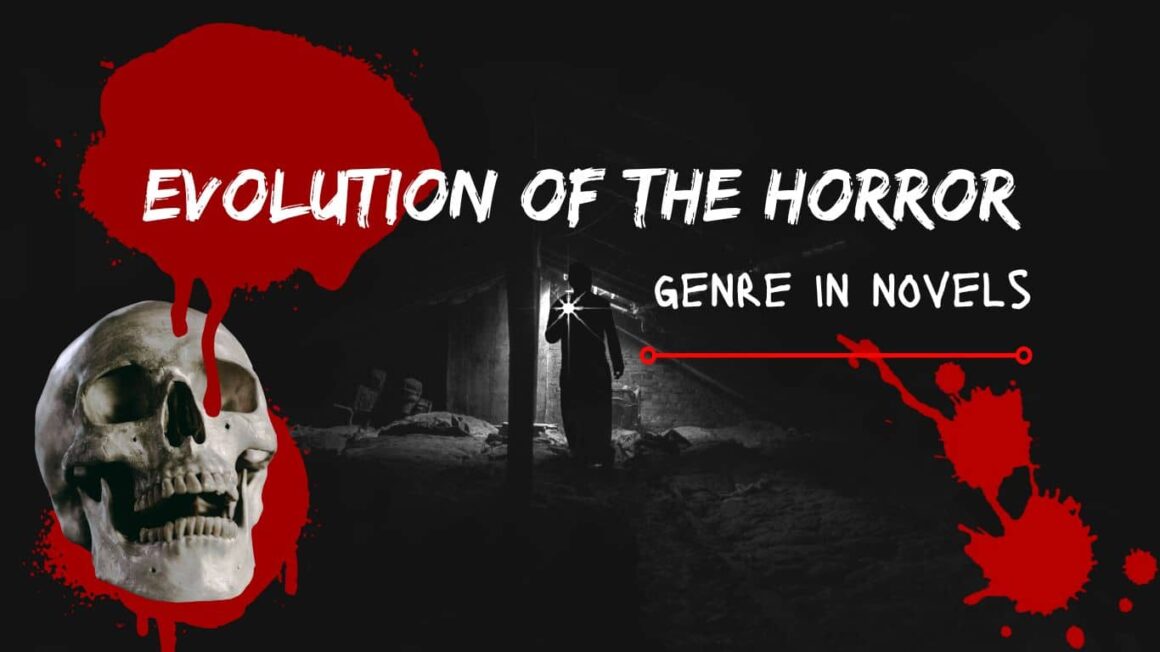The Horror genre has been shaped by cultural, societal, and technological changes, resulting in the emergence of new subgenres, new voices and perspectives, and a deeper understanding of fear and the human psyche. In this article, we will take a closer look at the evolution of the horror genre in novels, from its early roots in Gothic literature to its current state in contemporary horror. We will explore the different subgenres that have emerged throughout the years, the impact of technology and social media on the genre, and the role of diversity and representation in the modern horror genre.
Evolution of the Horror Genre in Novels
18th century
The horror genre in novels has undergone significant evolution over the years, from its early beginnings in Gothic literature to its modern iteration in contemporary horror. Gothic literature, which originated in the 18th century, laid the foundation for the horror genre by introducing elements of fear, mystery, and the supernatural. This genre was characterized by gloomy settings, such as castles and ruins, and often dealt with themes of death, decay, and the supernatural.

19th century
The 19th century saw the emergence of the Gothic romance, which combined elements of romance and horror. This subgenre was popularized by authors such as Bram Stoker, who wrote the classic novel Dracula, and Mary Shelley, who wrote Frankenstein. These novels dealt with themes of love, loss, and the darker side of human nature.
20th century
In the early 20th century, horror novels began to take on a more psychological approach. This was influenced by the work of Sigmund Freud and Carl Jung, who popularized the idea of the subconscious and the power of the mind to create fear. This new approach to horror focused on the inner fears and anxieties of characters, rather than solely relying on supernatural elements.
1960s and 1970s
In the 1960s and 1970s, the horror genre saw a resurgence in popularity with the emergence of the splatterpunk subgenre. This subgenre was characterized by graphic violence, gore, and explicit language. It was popularized by authors such as Stephen King and Dean Koontz, who wrote novels such as Salem’s Lot and Intensity, respectively.

1980s and 1990s
In the 1980s and 1990s, horror began to take on a more mainstream appeal. This was due in part to the success of Stephen King’s novels, which were adapted into popular films and television shows. Additionally, the advent of the internet and social media made it easier for authors to connect with readers and share their work.
Recent years
In recent years, the horror genre has continued to evolve, with the emergence of subgenres such as new weird, dark fantasy, and urban fantasy. These subgenres often blend elements of horror with other genres, such as fantasy or science fiction, to create a unique and dynamic reading experience.
The horror genre has also seen a rise in diversity and representation, with authors of color and marginalized communities writing their own stories and perspectives. This has brought a new level of depth and nuance to the genre, as well as providing a wider range of voices and perspectives.
Evolution of the Horror Genre in Novels due to technology
Technology has also changed the way horror stories are told. With the rise of virtual reality and augmented reality, authors can now create immersive experiences for readers, blurring the lines between reality and fiction. Additionally, the use of podcasts and audiobooks has allowed for a new way of experiencing horror stories, adding an additional layer of immersion and atmosphere.

Social media has also played a significant role in the evolution of the horror genre. Platforms such as Twitter, Instagram, and Facebook have allowed authors to connect with readers, share updates on their work, and build a fanbase. This has led to a rise in the number of independent and self-published horror authors, as well as a rise in the number of readers interested in the horror genre.
Conclusion
The evolution of the horror genre in novels has been a gradual process, shaped by cultural, societal, and technological changes. From its beginnings in Gothic literature to its modern iteration in contemporary horror, the genre has undergone significant changes, with new subgenres emerging, and new voices and perspectives being heard. It continues to evolve and change, making it an exciting and ever-evolving genre for readers and writers alike.
Also Read: 10 Best Mystery and Thriller Novels For a Suspenseful Read



